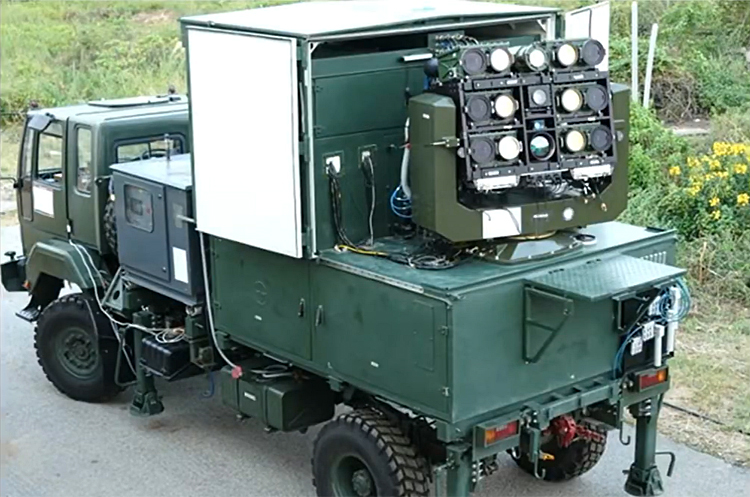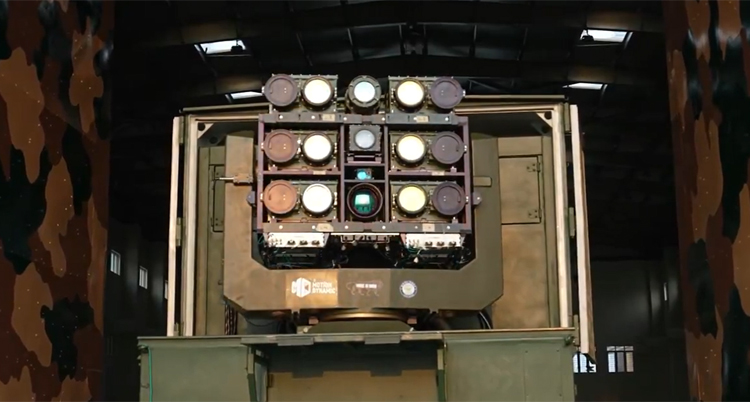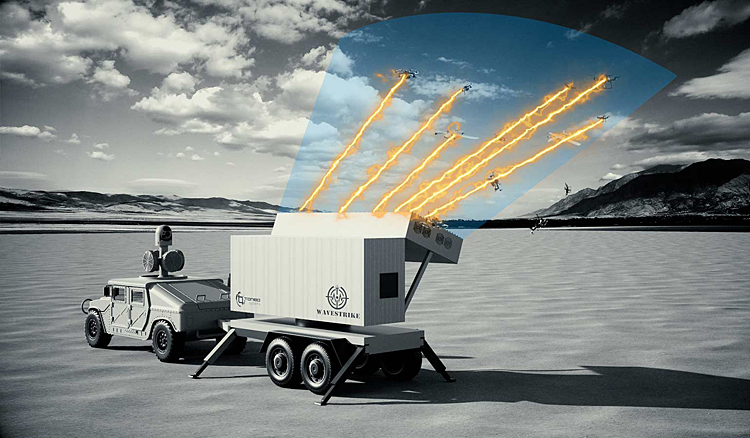INDIAN ARMED FORCES CHIEFS ON OUR RELENTLESS AND FOCUSED PUBLISHING EFFORTS

The insightful articles, inspiring narrations and analytical perspectives presented by the Editorial Team, establish an alluring connect with the reader. My compliments and best wishes to SP Guide Publications.

"Over the past 60 years, the growth of SP Guide Publications has mirrored the rising stature of Indian Navy. Its well-researched and informative magazines on Defence and Aerospace sector have served to shape an educated opinion of our military personnel, policy makers and the public alike. I wish SP's Publication team continued success, fair winds and following seas in all future endeavour!"

Since, its inception in 1964, SP Guide Publications has consistently demonstrated commitment to high-quality journalism in the aerospace and defence sectors, earning a well-deserved reputation as Asia's largest media house in this domain. I wish SP Guide Publications continued success in its pursuit of excellence.
- A leap in Indian aviation: Prime Minister Modi inaugurates Safran's Global MRO Hub in Hyderabad, Calls It a Milestone
- All about HAMMER Smart Precision Guided Weapon in India — “BEL-Safran Collaboration”
- India, Germany deepen defence ties as High Defence Committee charts ambitious plan
- True strategic autonomy will come only when our code is as indigenous as our hardware: Rajnath Singh
- EXCLUSIVE: Manish Kumar Jha speaks with Air Marshal Ashutosh Dixit, Chief of Integrated Defence Staff (CISC) at Headquarters, Integrated Defence Staff (IDS)
- Experts Speak: G20 Summit: A Sign of Global Fracture
Indigenous High-Powered Microwave DEW
By successfully demonstrating this technology, India has joined the elite list of countries like the United States, China and Russia having advanced laser weapon capabilities
 |
The Author is Former Director General of Information Systems and A Special Forces Veteran, Indian Army |

It was reported in these columns earlier this year that on April 13, 2025, India achieved a masterclass milestone in successfully demonstrating its capability to destroy fixed-wing aircraft, missiles, and swarm drones using an indigenous 30-kilowatt laser-based directed energy weapon (DEW) system. In the successful trial, carried out at the National Open Air Range, Kurnool in Andhra Pradesh, the indigenous Mk-II (A) DEW system successfully engaged fixed-wing drones at long range, thwarted a multiple drone attack, and destroyed enemy surveillance sensors and antennae. The 30-kilowatt laser-based DEW system was developed by DRDO's Centre for High Energy Systems and Sciences (CHESS), Hyderabad along with other labs, academic institutions and Indian industries.
India achieved a masterclass milestone in successfully demonstrating its capability to destroy fixed-wing aircraft, missiles, and swarm drones using an indigenous 30-kilowatt laser-based directed energy weapon (DEW) system
Tonbo Imaging demonstrated the WaveStrike capabilities at Aero India 2025, where the system's effectiveness against UAVs drew significant interest. Its potential to integrate with existing defence platforms further amplifies its strategic value, offering a seamless addition to air defence, coastal surveillance, and battlefield operations. By successfully demonstrating this technology, India has joined the elite list of countries like the United States, China and Russia having advanced laser weapon capabilities. Interestingly, after the success of Operation 'Sindoor', Taiwan has evinced interest in India's 30-kilowatt laser-based Mk-II (A) DEW system.


Another good news is that during the Aero India 2025, held from February 10 to February 14, Bengaluru-based 'Tonbo Imaging' demonstrated 'WaveStrike'; its 3rd-generation High-Power Microwave (HPM) Directed Energy Weapon (DEW) system. It is designed for mobility and rapid deployment, mounted on a trailer connected to a Light Mobility Vehicle (LMV) 4x4, and is effective against unmanned aerial vehicles (UAVs) and other electronic threats. The system uses multibeam klystrons to generate microwave energy, allowing it to jam communications and disable electronic devices over a 3-km range.
Bengaluru-based Tonbo's 3rd-generation High-Power Microwave (HPM) Directed Energy Weapon (DEW) system is to be installed on a surface vessel of the Indian Navy
Key features and capabilities of 'WaveStrike' include the following: Innovative Technology - the system features Multi-Beam Klystron (MBK) technology, enabling long-range engagement with a compact and mobile design; Enhanced Defence Capabilities - offers instantaneous, wide-area neutralisation of drone swarms and electronic threats, making it superior to traditional counter-UAV systems; All-Weather Operation - unlike lasers and kinetic weapons, it operates effectively in all environmental conditions, ensuring reliable defence in any scenario; Compact and Scalable Design - the system's compact form factor allows for easy integration into vehicle-mounted, airborne, and naval platforms, providing versatile deployment options; Non-lethal - disables electronic systems without causing physical destruction; International Interest - has secured international contracts from militaries outside Asia-Pacific, with deliveries planned for testing and evaluation; Future Enhancements - Tonbo is developing an enhanced version with a 5-km range.

Tonbo's HPM DEW system is reportedly to be installed on a surface vessel of the Indian Navy. Tonbo has also secured contracts from militaries outside Asia-Pacific to supply this HPM DEW. According to Ankit Kumar, co-founder and Chief Technology Officer of Tonbo, the HPM DEW, named WaveStrike, "uses multibeam klystrons, which can generate a lot of microwave energy with a small antenna and with limited power". He added that the HPM DEW has an active electronically scanned array (AESA) radar to detect threats and a camera to identify the threats. The DEW uses information from these sensors to target a hostile UAV. Ankit Kumar further said, "This system's application is not just limited to UAVs. Technically, it will be able to eliminate any electronics you fire at whether it is a communication system or optronics."
Unlike traditional munitions, HPM systems can engage multiple targets with one pulse, offering cost-effective solutions for defence against swarms of drones or other electronic threats. The ability to destroy enemy assets without causing physical damage provides military commanders with additional strategic options, particularly in scenarios where minimising collateral damage is critical.
HPM systems can engage multiple targets with one pulse, offering cost-effective solutions for defence against swarms of drones or other electronic threats
Concurrently, China has introduced its high-power microwave (HPM) weapon; the 'Hurricane-3000'. Hurricane-3000 is installed on a 8×8 military truck and works by sending microwave beams to disable enemy drones and electronic equipment. It can do this from a distance of up to 3-km making it effective against modern threats that rely on electronics. The Hurricane-3000 was developed by NORINCO, a Chinese government-owned defence company. It was first shown to the public at the Zhuhai Airshow in November 2024. Since then, it has gone through successful field tests, according to Grey Dynamics, a UK-based investigative news platform.
Hurricane-3000 can send energy blasts, reaching up to 80,000 volts through a special antenna mounted on a military truck. During tests carried out by NORINCO in late 2024 and January 2025, the Hurricane-3000 fired over 5,000 powerful microwave blasts without any drop in performance. In simple terms, this means the system was able to release strong energy pulses thousands of times without overheating, breaking down, or losing power.
Chinese scientists have developed an HPM gun capable of firing over 10,000 shots without failure, designed to disable drones, missiles, aircraft and satellites by disrupting their electronics
Hurricane-3000 can send energy blasts, reaching up to 80,000 volts through a special antenna mounted on a military truck. During tests carried out by NORINCO in late 2024 and January 2025, the Hurricane-3000 fired over 5,000 powerful microwave blasts without any drop in performance. In simple terms, this means the system was able to release strong energy pulses thousands of times without overheating, breaking down, or losing power; indicating it can handle heavy use in intense combat situations. China has also introduced another HPM DEW called 'FK-4000', which has a range of 3.2 km.
According to news reports of May 2, 2025, Chinese scientists have developed an HPM gun capable of firing over 10,000 shots without failure, designed to disable drones, missiles, aircraft and satellites by disrupting their electronics. The weapon features innovations like a self-contained vacuum system and ceramic-metal welding, which significantly reduce maintenance and enhance durability, allowing it to fire pulses at hundreds of megawatts per shot. While China advances both vacuum-based and gallium nitride (GaN)-based microwave weapons, analysts suggest this dual approach could provide a competitive edge, though details on the weapon's energy source remain unclear.





